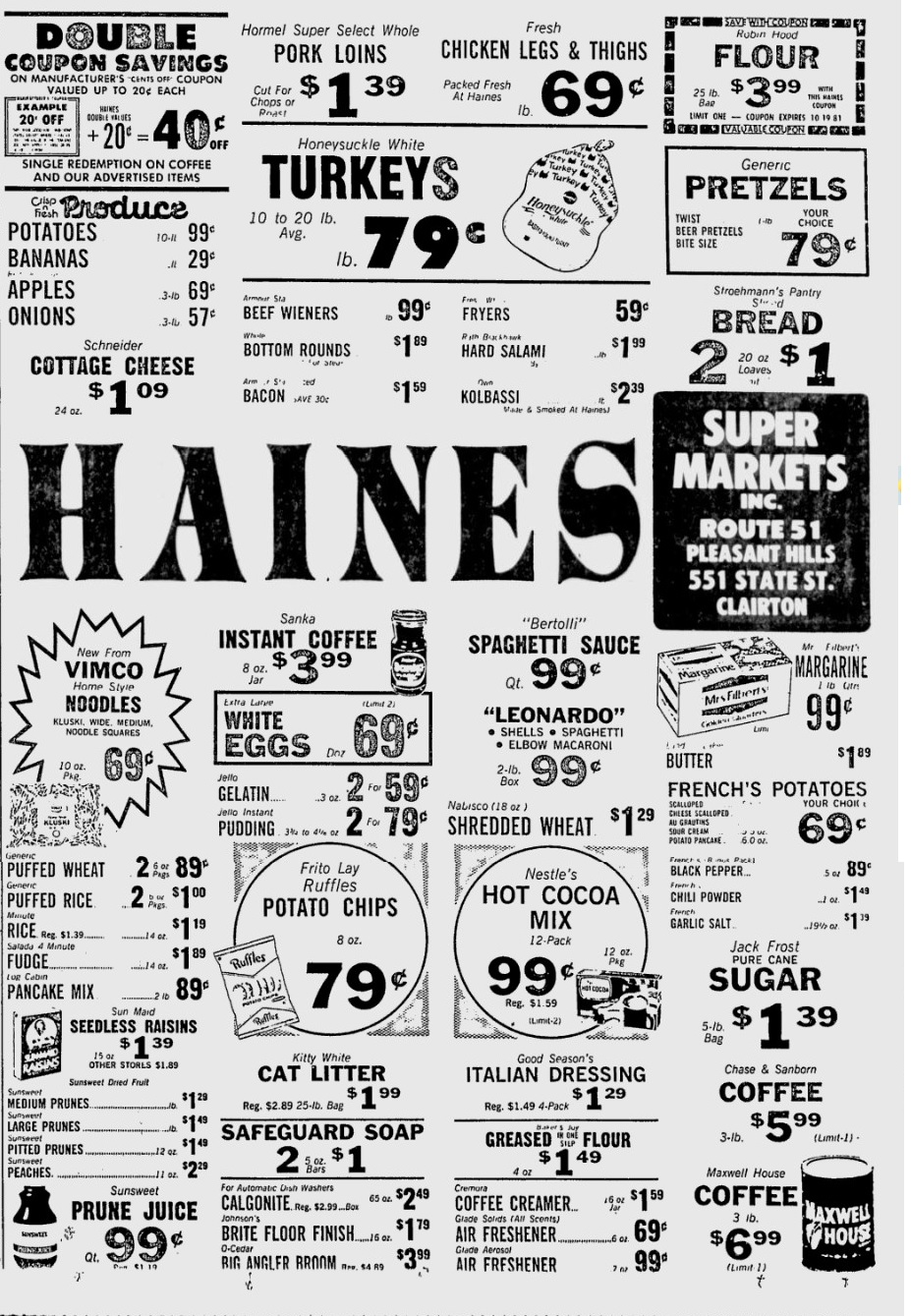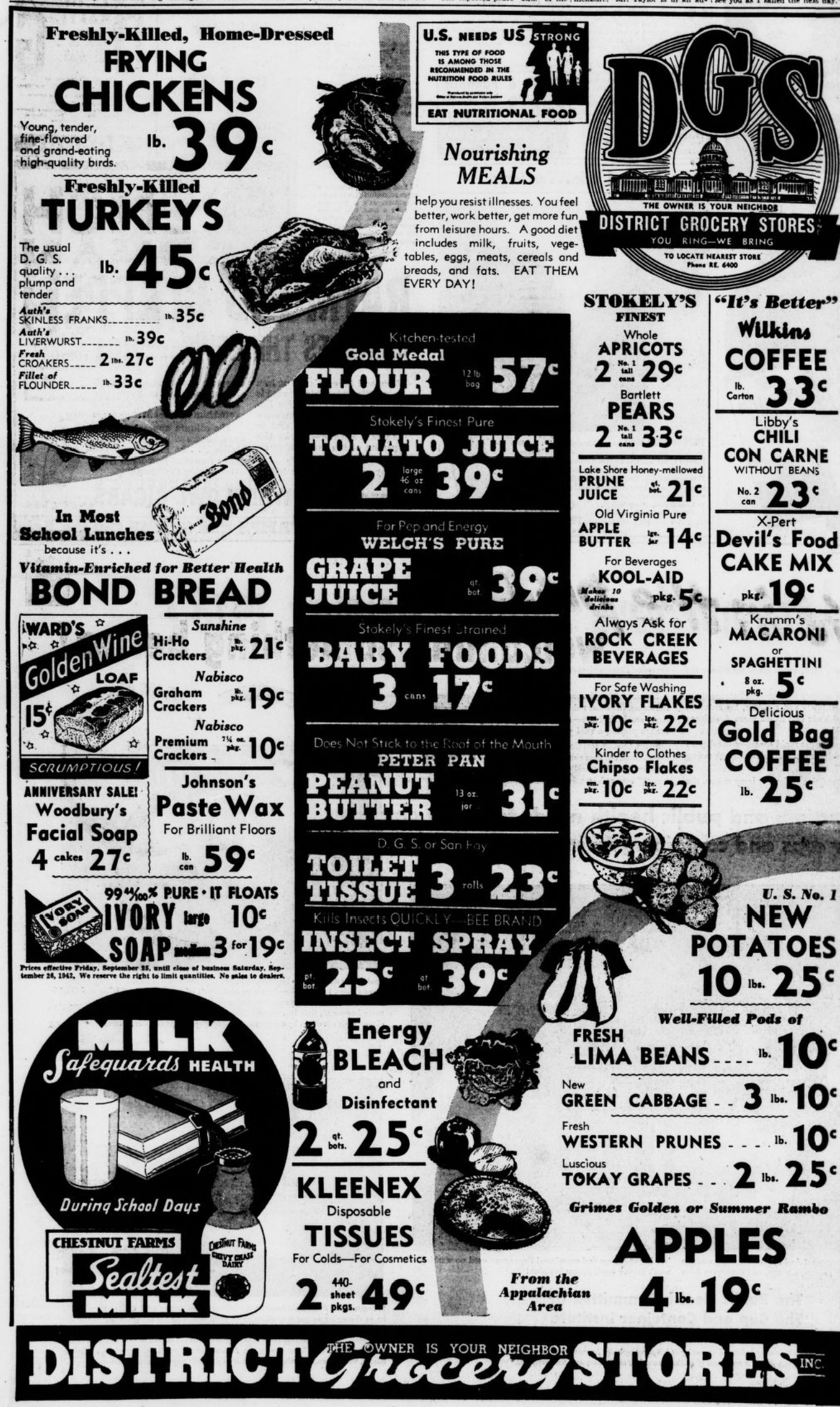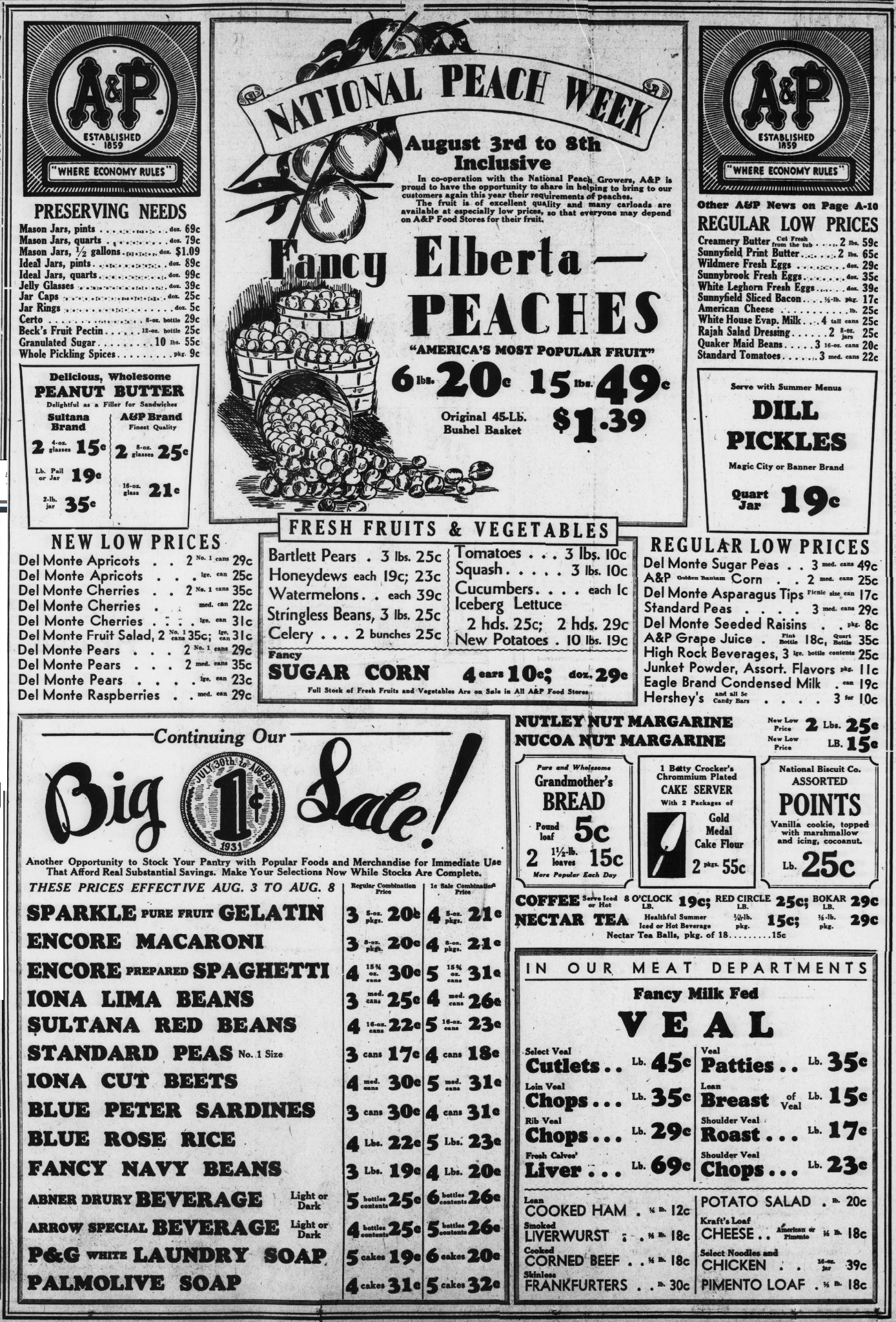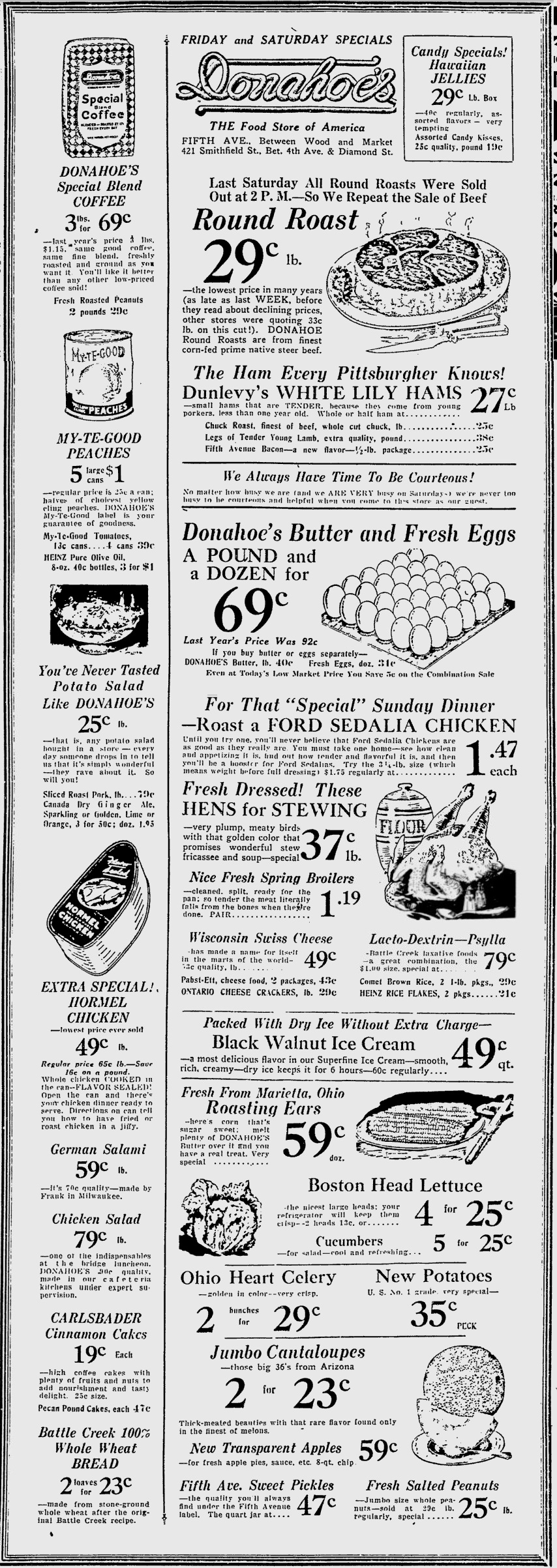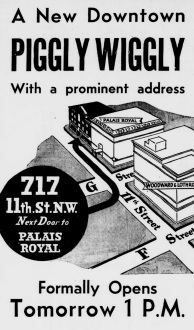 Here’s a snapshot of what grocery prices looked like in 1934, from the December 13, 1934, issue of the Washington Evening Star.
Here’s a snapshot of what grocery prices looked like in 1934, from the December 13, 1934, issue of the Washington Evening Star.
The ad is for Piggly Wiggly, which just opened a new store in downtown Washington at 717 11th St. NW.
While the prices might look like bargains, keep in mind that this was at the depths of the Great Depression, and there has been a lot of inflation since then. One dollar in 1934 dollars is the equivalent of just over $20 in 2021 dollars, according to this online inflation calculator. To put it another way, one dollar in 1934 represented a silver dollar, or four silver dimes, or four silver quarters. Any of those would cost you about $20 today.
So a dozen eggs look like a bargain at 47 cents, but that’s the equivalent of $10 today. Meat fares a little better. Ham is 19 cents a pound, which is about $3.80 today. A whole chicken in a can (about two pounds) is 87 cents, or about $17 in today’s money. How does that compare to the same product, which is still available today:
For those on a budget, turnips were 3 pounds for a dime, or about $2 in today’s money. Jello was 3 packages for 19 cents, or 6-1/3 cents each. In today’s money, that’s about $1.26 each. How does that compare to today’s price?
If this is where you did your shopping, what would you buy?
Some links on this site are affiliate links, meaning that this site earns a small commission if you make a purchase after clicking on the link.


